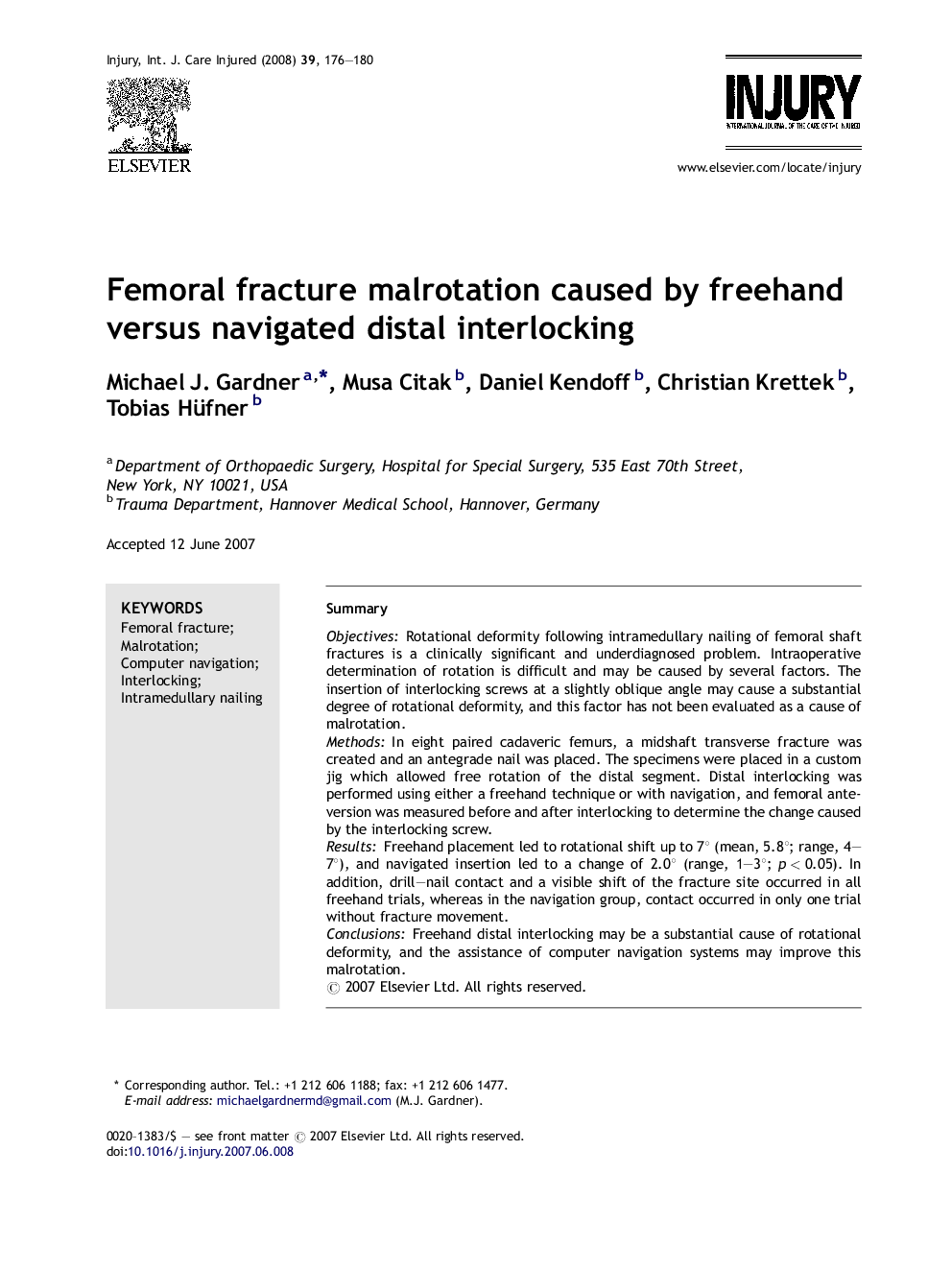| Article ID | Journal | Published Year | Pages | File Type |
|---|---|---|---|---|
| 3242186 | Injury | 2008 | 5 Pages |
SummaryObjectivesRotational deformity following intramedullary nailing of femoral shaft fractures is a clinically significant and underdiagnosed problem. Intraoperative determination of rotation is difficult and may be caused by several factors. The insertion of interlocking screws at a slightly oblique angle may cause a substantial degree of rotational deformity, and this factor has not been evaluated as a cause of malrotation.MethodsIn eight paired cadaveric femurs, a midshaft transverse fracture was created and an antegrade nail was placed. The specimens were placed in a custom jig which allowed free rotation of the distal segment. Distal interlocking was performed using either a freehand technique or with navigation, and femoral anteversion was measured before and after interlocking to determine the change caused by the interlocking screw.ResultsFreehand placement led to rotational shift up to 7° (mean, 5.8°; range, 4–7°), and navigated insertion led to a change of 2.0° (range, 1–3°; p < 0.05). In addition, drill–nail contact and a visible shift of the fracture site occurred in all freehand trials, whereas in the navigation group, contact occurred in only one trial without fracture movement.ConclusionsFreehand distal interlocking may be a substantial cause of rotational deformity, and the assistance of computer navigation systems may improve this malrotation.
